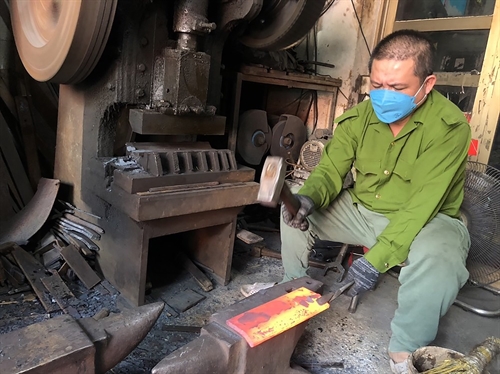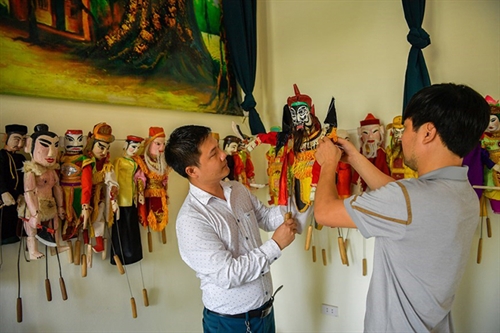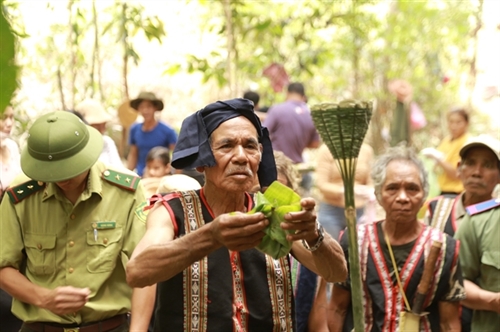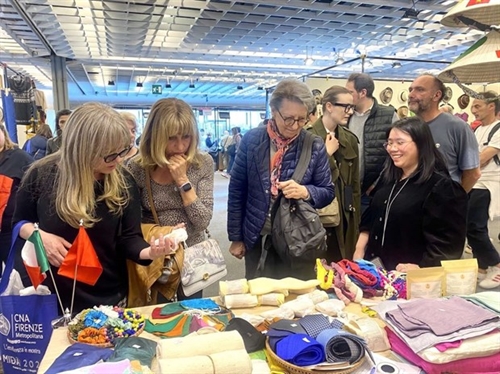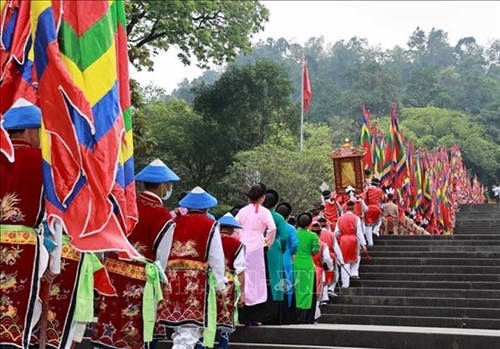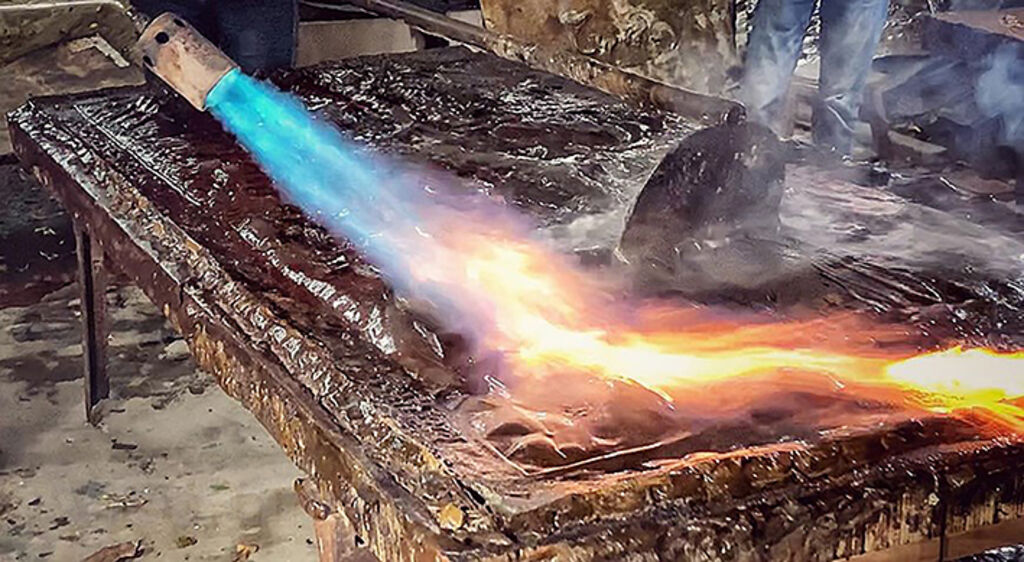 |
| Casting copper for making a hand engraved object__Photo: M.Mai/Vietnam+ |
Dong Xam traditional silver hand engraving village in Thai Binh province is one of the three places in northern region which are well-known for the craft of silversmithing besides Hang Bac street and Dinh Cong village in the capital city of Hanoi. The 600-year-old village, also known as Duong Tham, is located on the right bank of Dong Giang river in Hong Thai commune, Kien Xuong district.
The village’s silver hand engraving craft has existed since the 15th century. Historical documents show that the founder of Dong Xam traditional silver hand engraving village was Nguyen Kim Lau. The man earned his living from copper soldering. To earn enough to support himself, he had to travel far away from his village to practice copper welding and was not noticed in the village for seven years. He came to Bao Lac mountainous district in Tuyen Quang region (now Cao Bang province) where he learnt silver hand engraving craft. When returning home in 1428, he handed down the craft to his villagers and formed Phuc Loc silver hand engraving guild in Duong Tham village, Chan Dinh district, Son Nam region with 149 workers who came from eight family clans: Tran, Dinh, Vu, Hoang, Ngo, Do, Nguyen and Trieu. After he passed away at the age of 80, villagers built a worshipping place for him. Nowadays, on the death anniversary of Nguyen Kim Lau on the fifth of the first lunar month and during the Dong Xam Temple Festival which is usually organized from the first to the fifth of the fourth lunar month, silversmiths in the village hold an incense-offering ceremony in his temple to show their gratitude and respect to the founder of the silver hand engraving craft.
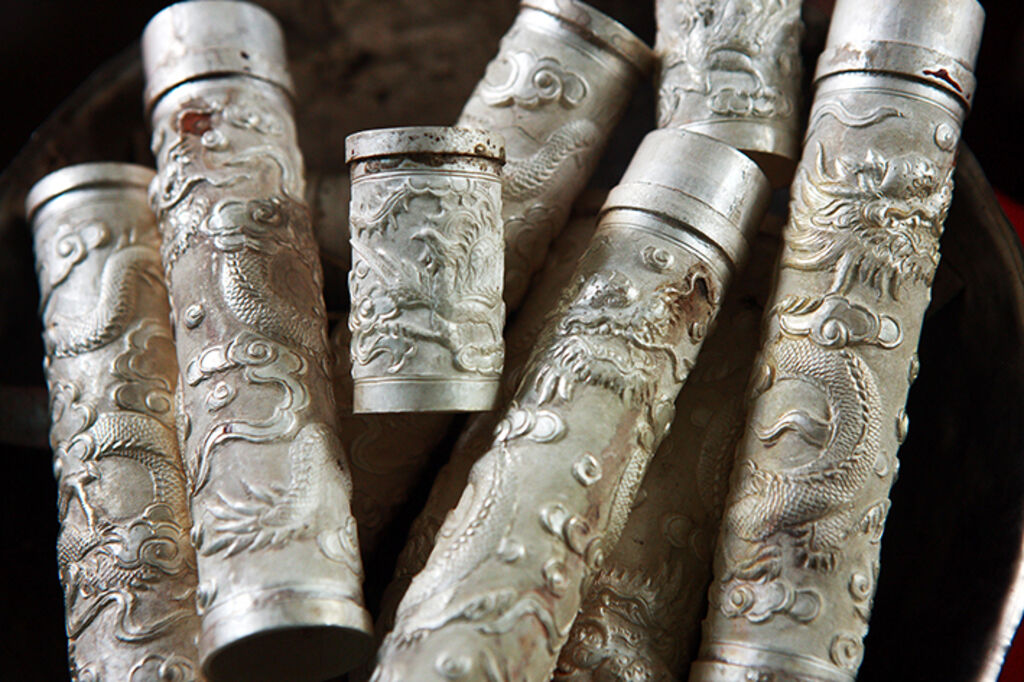 |
| Dragon and phoenix motifs embossed on silver products__Photo: Lam Khanh/VNA |
The village’s glorious period of the craft village is from the 19th to early 20th century when Dong Xam silversmiths introduced the craft to the nation. During the Nguyen dynasty in the 19th century, a number of Dong Xam craftsmen were invited to the ancient capital of Hue to manufacture hand-engraved silver and gold objects, including bows, arrows and swords, worshipping objects, offerings and utensils for daily use, and other jewelry items for the royal court and mandarins. It was Dong Xam craftsmen who, together with silversmiths from Chau Khe village in Hai Duong province and Dinh Cong village in Hanoi, formed Hang Bac (silversmith guild) street in Hanoi. In the early 20th century, Dong Xam’s hand engraved silver items were introduced at an international fair in Paris.
The craft village underwent recession during the anti-French colonialist war (1945-54) and the subsidy- economy period (1955-85) when many silversmiths in the village had to quit their jobs.
After 1986, the silver hand engraving craft was slowly revived and developed thanks to the country’s policy of opening the economy and integrating into the world as well as Dong Xam villagers’ solidarity and mutual assistance.
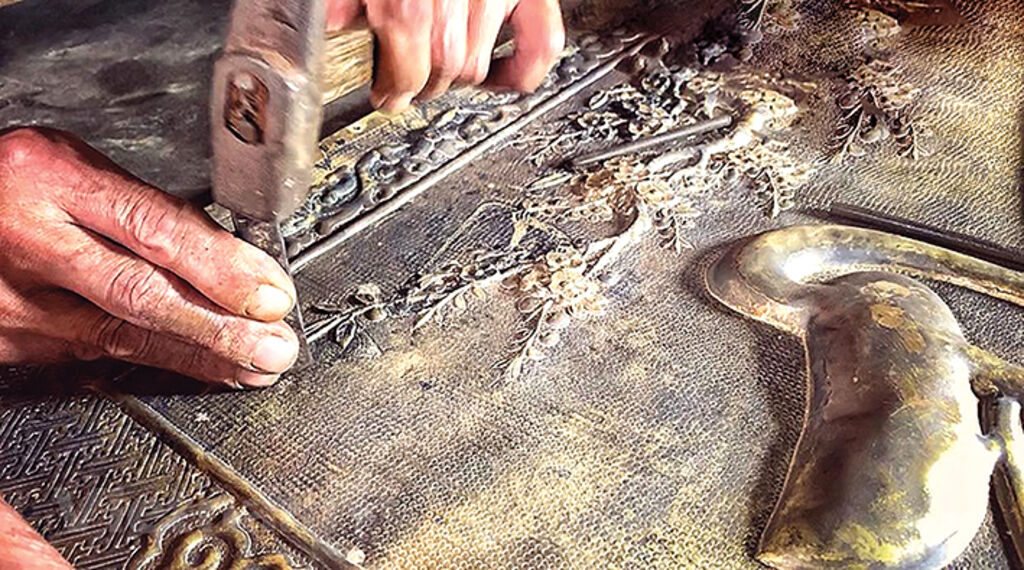 |
| A silversmith embosses flower patterns__Photo: M.Mai/Vietnam+ |
Silver hand engraving artisans must possess good knowledge of painting and be patient, passionate, meticulous and precise. Dong Xam hand engraved silver pieces are easily distinguished for their spectacular embossed shapes, decorative patterns and gorgeous intricate designs.
The basic tools a hand engraver needs are hammers and gravers which are used create patterns. The process of hand engraving on gold, silver and copper objects is quite similar but engraving on gold is a little bit difficult as the material is soft.
The silver hand engraving process consists of three main steps, starting with melting silver bars or balls, laminating material and shaping a product and ending with soldering separate parts together to form a complete product.
However, hand engraving is the most difficult and sophisticated time-consuming technique. In this step, a silversmith taps his graver on a drawing placed on the product’s front side to create embossed patterns. This technique, called chasing, is applied to products with simple shapes. For other products like a silver tray or a silver box, craftsmen have to hammer products from their reverse side to engrave repousse patterns such as the four sacred mythical creatures - the dragon, the unicorn, the tortoise and the phoenix or four noble trees - pine, chrysanthemum, bamboo and apricot before applying chasing.
In the past, most products of Dong Xam village were worshipping items such as statues, hoanh phi cau doi (horizontal boards and pairs of parallel panels engraved with calligraphic characters usually hung at pagodas, temples and worship halls), incense-burners and candle holders, lamps, handicraft products and jewelry.
Through many ups and downs, at present, Dong Xam villagers are now specialized in hand engraving copper paintings and portraits as well as porcelain, ceramics and glass products with hand-engraved silver or copper patterns and motifs.-




